 Geology of an ancient porphyry copper deposit,
Geology of an ancient porphyry copper deposit,Karas region, Namibia
 Geology of an ancient porphyry copper deposit,
Geology of an ancient porphyry copper deposit,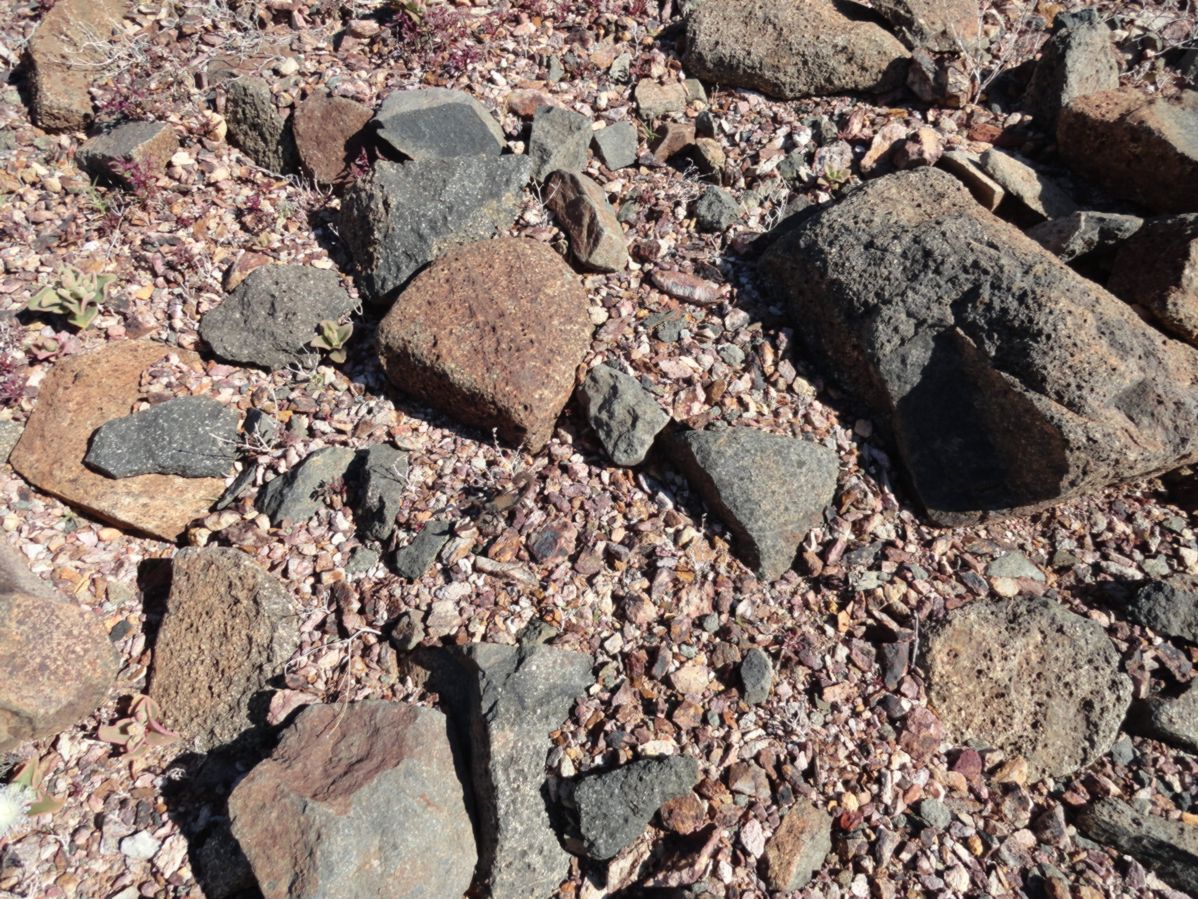 Can you spot the creature in this photo? Can you spot the creature in this photo?You really need to be on your toes out in the Namibian desert. |
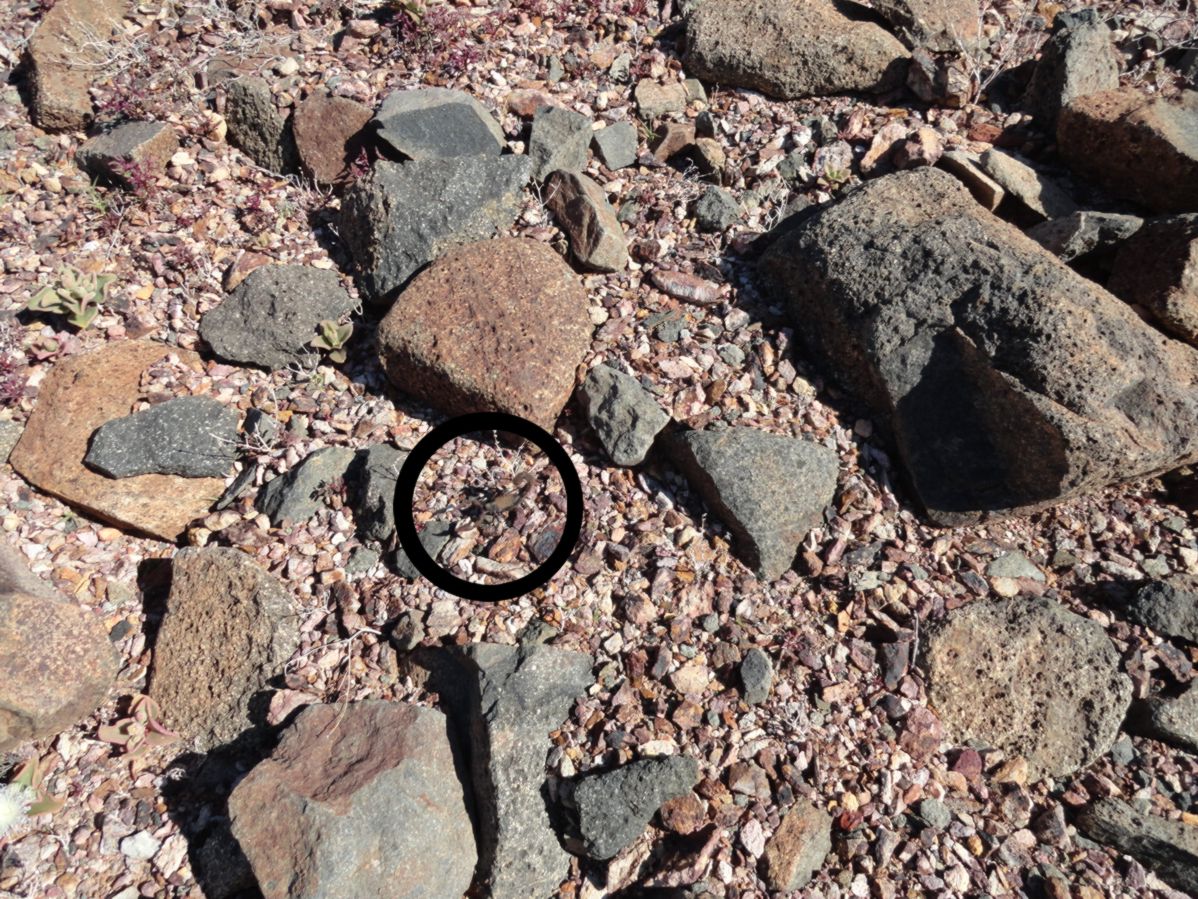 There's the bug in the photo - a hairly
little scorpion about 2 inches (5 cm) long. There's the bug in the photo - a hairly
little scorpion about 2 inches (5 cm) long. |
 Big beetles like this were fairly common,
but harmless. Big beetles like this were fairly common,
but harmless. |
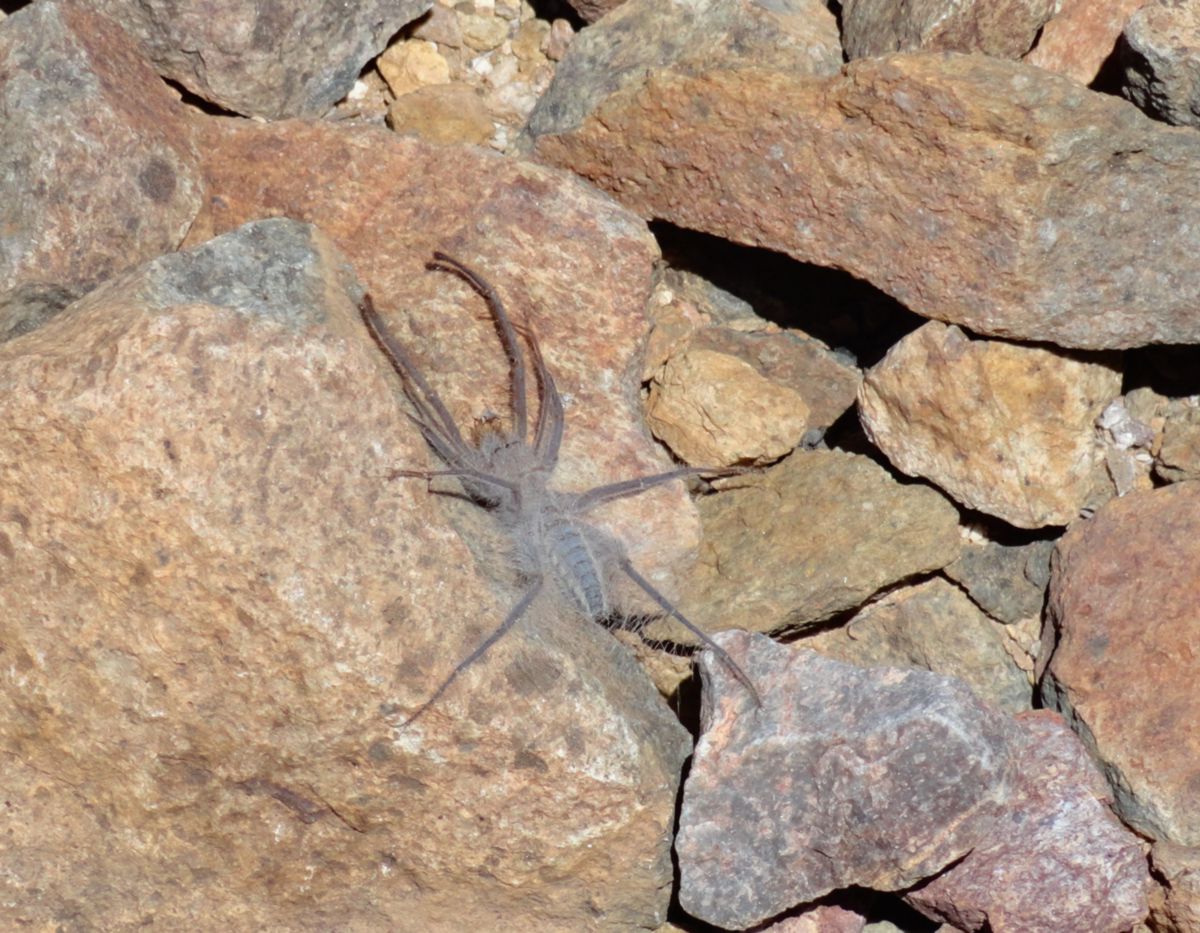 This big spider was about 1½ inches (4
cm) long and very hairy. We speculated that all that
hair may have served to give the spider an early warning if
attached by a wasp, but we're geologists, not
entomologists. This big spider was about 1½ inches (4
cm) long and very hairy. We speculated that all that
hair may have served to give the spider an early warning if
attached by a wasp, but we're geologists, not
entomologists. |
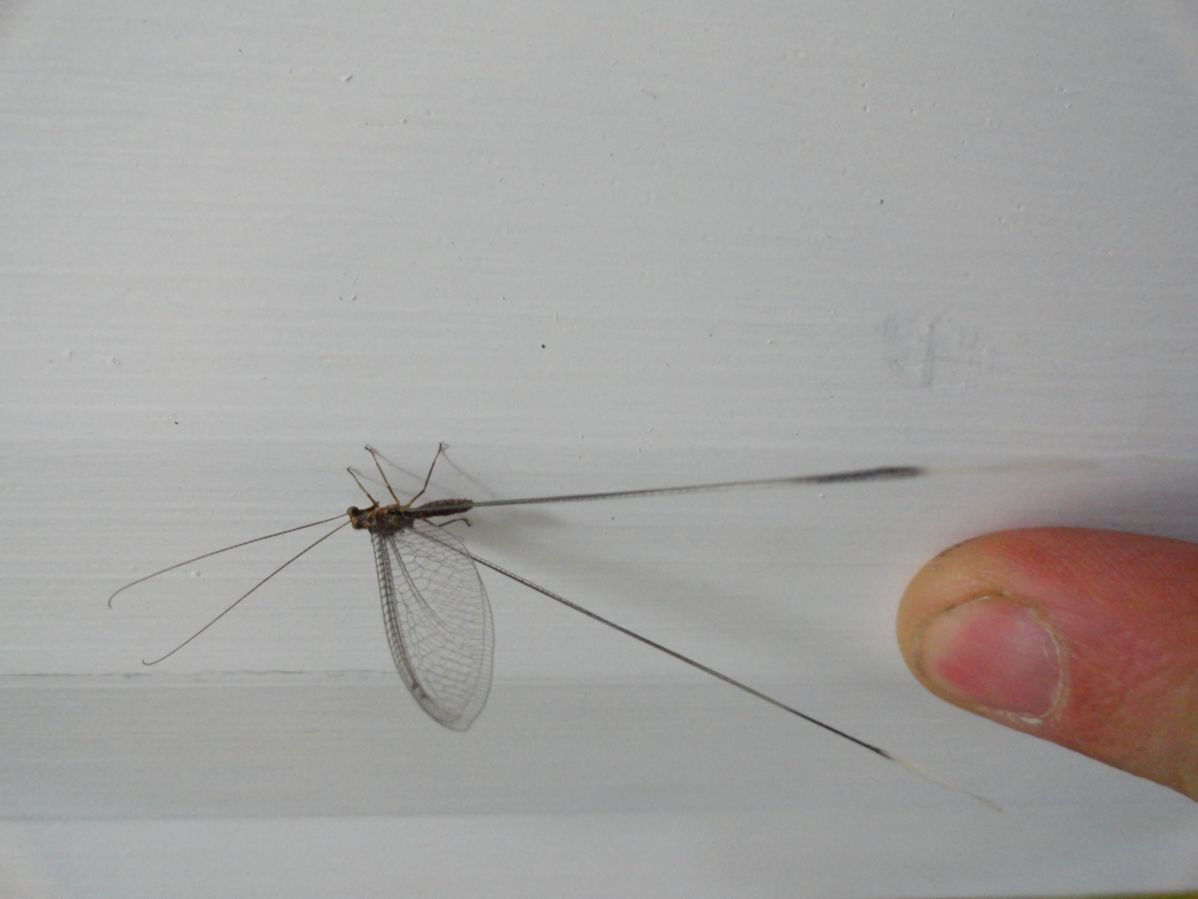 The mayflies (?) had tw remarkably long
modified wings that looked like antenae pointing
backward. The mayflies (?) had tw remarkably long
modified wings that looked like antenae pointing
backward. |
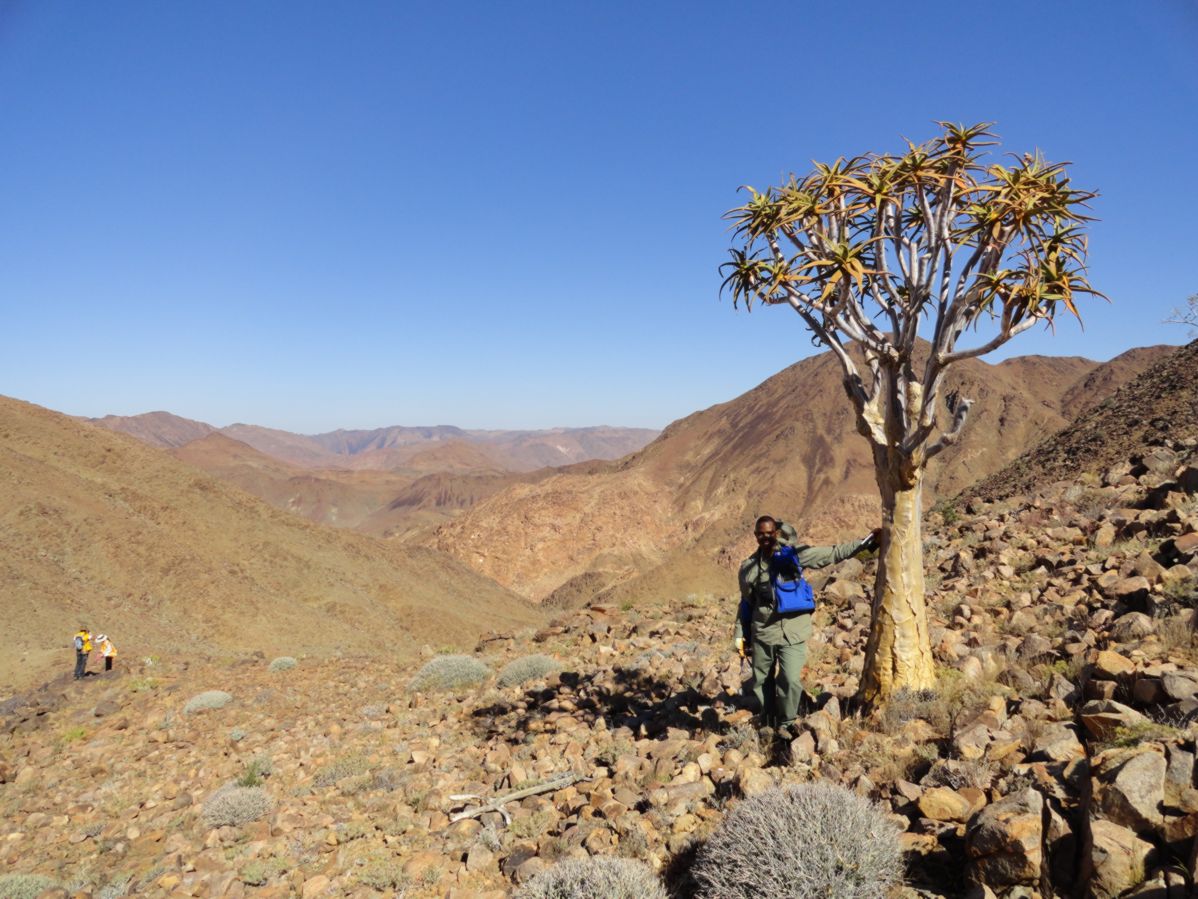 Quiver trees were relatively common in the
field area. I wonder how long it takes trees like this
to grow this big, and what all they might have seen during
that time if they had eyes. Quiver trees were relatively common in the
field area. I wonder how long it takes trees like this
to grow this big, and what all they might have seen during
that time if they had eyes. |
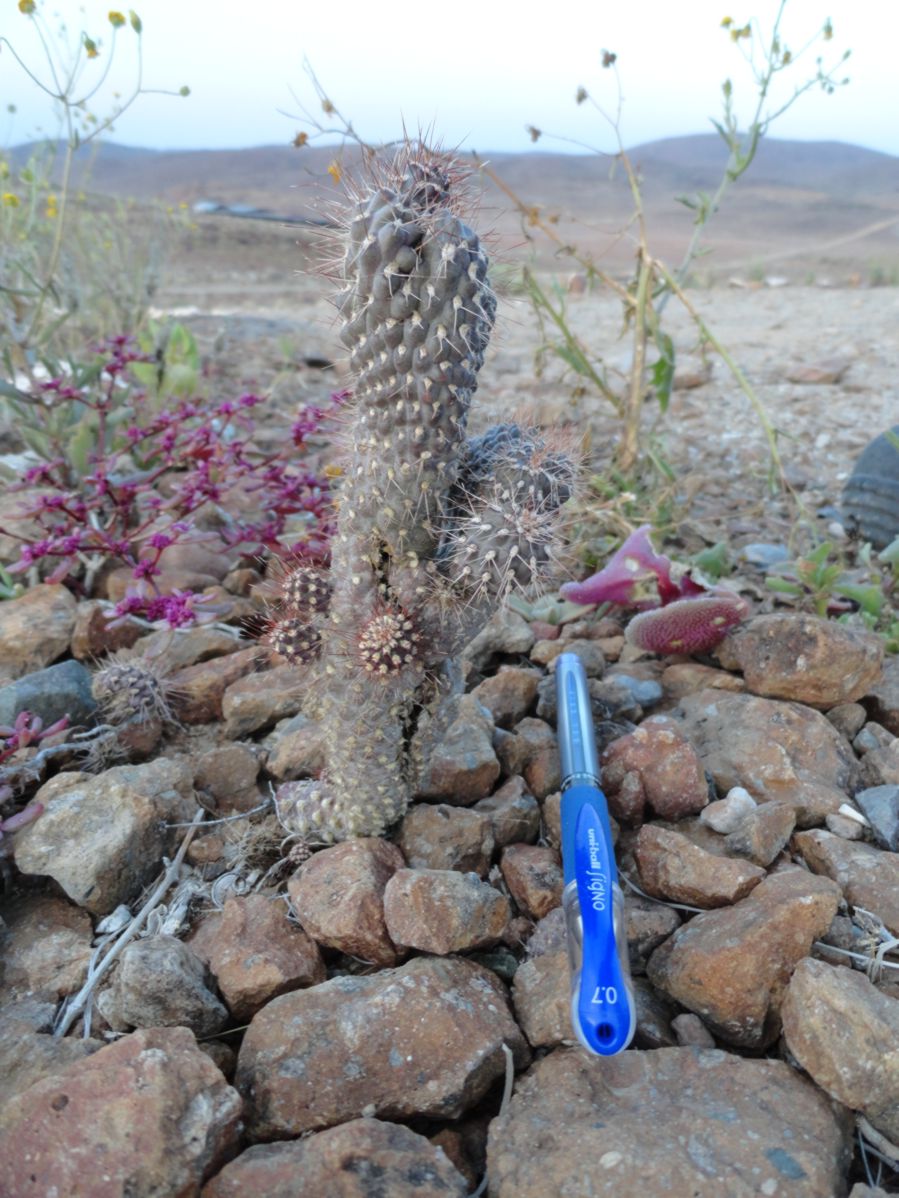 For being a place that resembles the
American southwest, there were surprisingly few cacti in the
region. Even Namibia's plant life was friendly! For being a place that resembles the
American southwest, there were surprisingly few cacti in the
region. Even Namibia's plant life was friendly! |
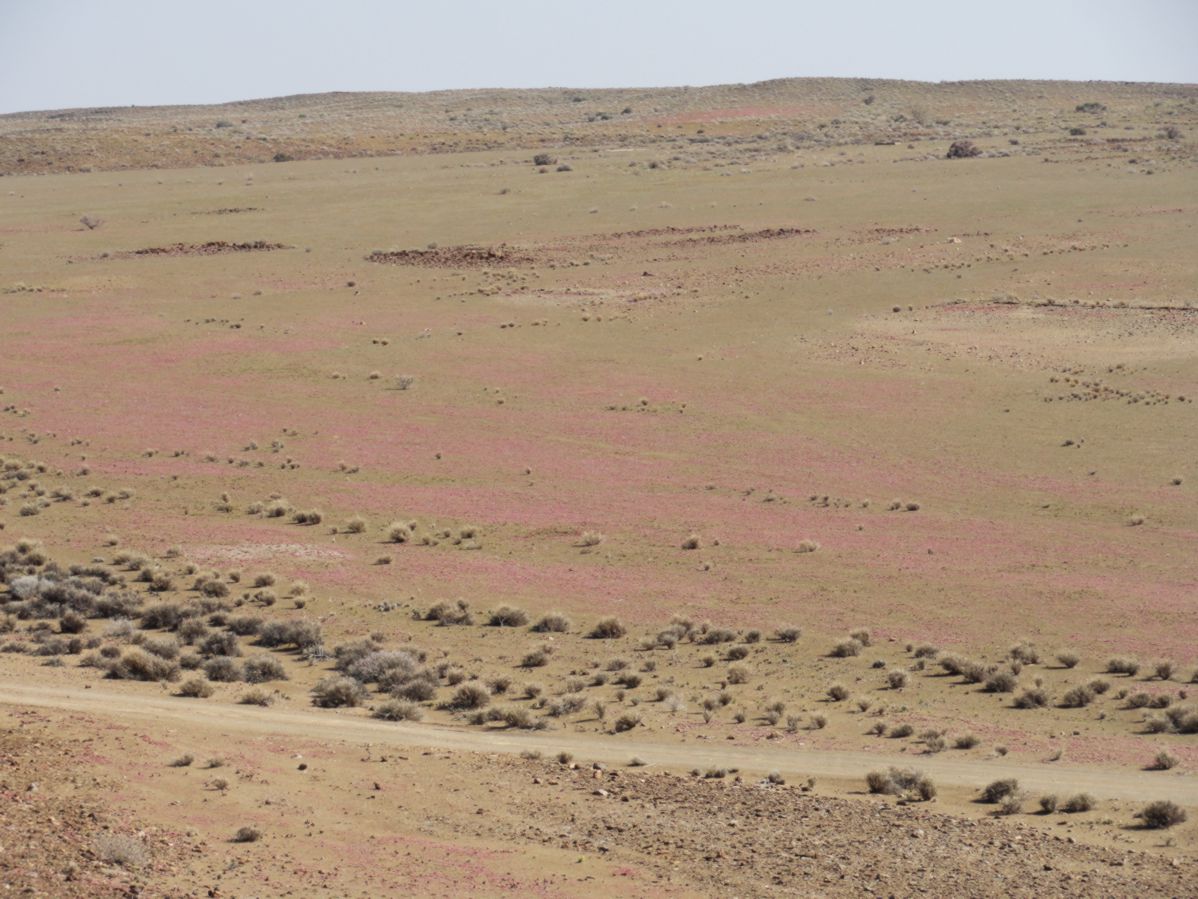 The floor of the Namibian desert is covered
with plant life. The carpet of red flowers and green
plants is almost continuous here. The floor of the Namibian desert is covered
with plant life. The carpet of red flowers and green
plants is almost continuous here. |
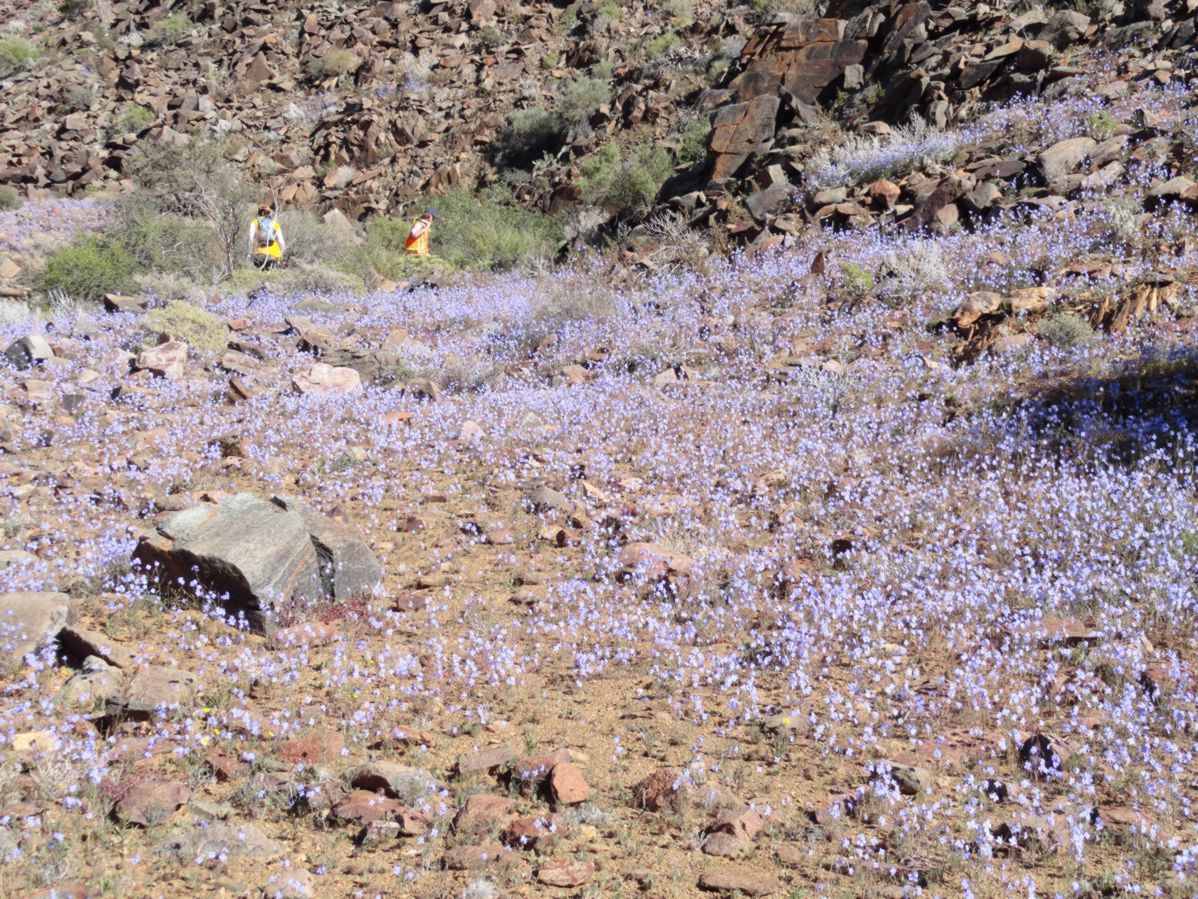 A few days after a day of rain, purple
flowers like this popped up all over. A few days after a day of rain, purple
flowers like this popped up all over. |
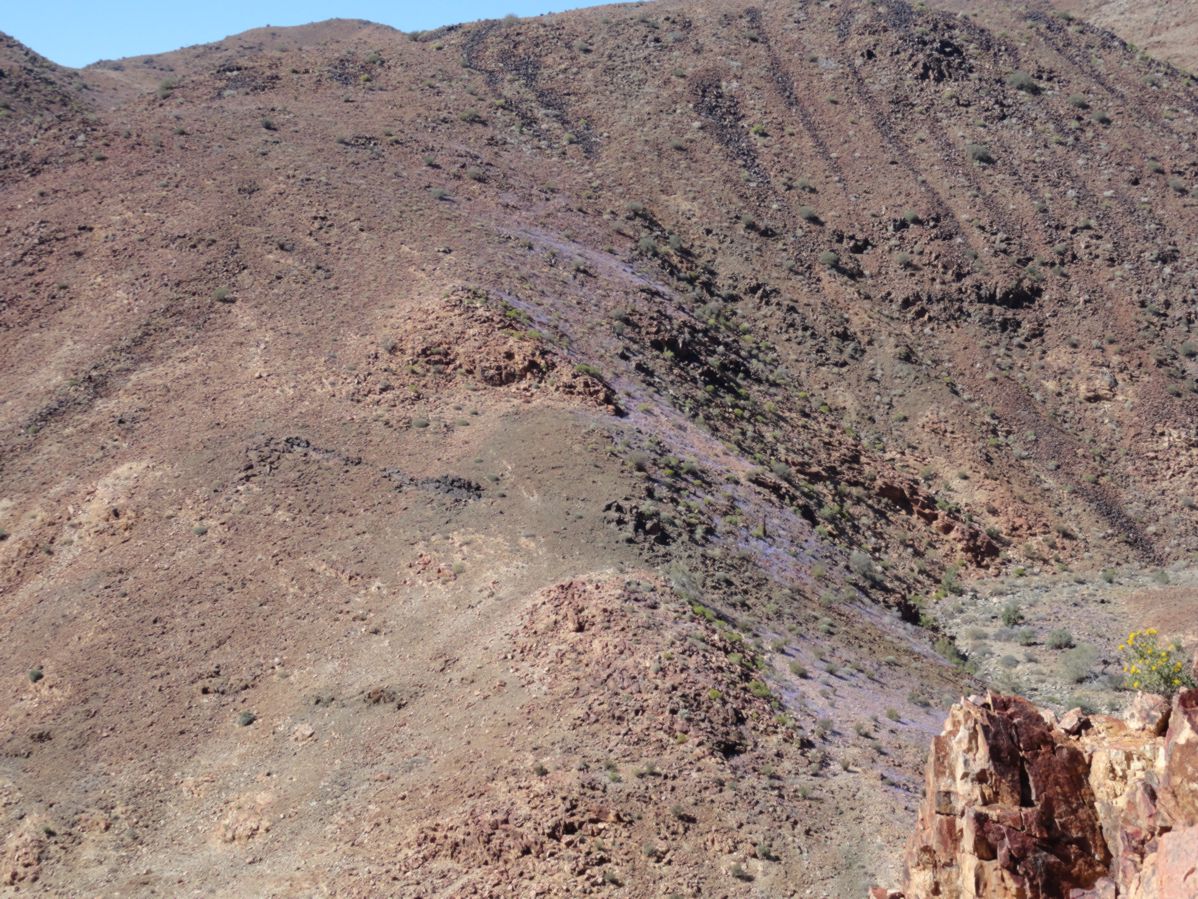 Well, strictly speaking, they didn't pop up all over.
They preferred south-facing slopes, presumably because the
south-facing slopes had less direct sunlight and so lost
less water to evaporation. Well, strictly speaking, they didn't pop up all over.
They preferred south-facing slopes, presumably because the
south-facing slopes had less direct sunlight and so lost
less water to evaporation. |

